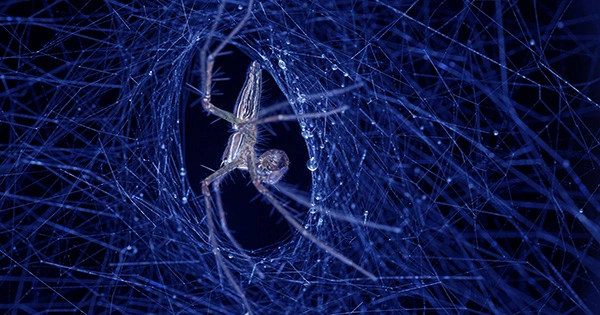Spider silk is elastic, robust, and durable. However, creating it by genetically engineering a more cooperative organism has been difficult. Researchers have now utilized gene editing to create silkworms capable of spinning spider strands stronger than the Kevlar used in bulletproof vests.
The substance, detailed today in Matter, is “a really high-performance fiber,” according to Justin Jones, a biologist at Utah State University who engineers spider silks but was not involved in the research. He believes it might be used to create lightweight but strong structural materials for fuel-efficient planes and cars, wound dressings for speedier healing, and super thin yet strong sutures for eye procedures.
Silkworms have been cultivated for thousands of years, and their cocoons have been unwound to create material for garments. However, their silk is readily broken. Spiders face the reverse issue: they produce fantastic silks, but the arachnids are difficult to cultivate. In a short space, 100 silkworms can coexist peacefully, whereas 100 caged spiders will battle one another until only one or two are left alive.

For years, researchers have attempted to genetically engineer silkworms to produce spider strands in an attempt to harness the best of both animals. However, spider silk proteins are huge, and matching large genes has proven challenging to introduce into other animals’ genomes.
So Junpeng Mi, a biotechnologist at Donghua University, and colleagues chose to experiment with a very modest spider silk protein in their latest study. MiSp is found in Araneus ventricosus, an orb-weaving spider native to East Asia. The scientists utilized CRISPR to insert MiSp into the gene that codes for the major silk protein in silkworms.
According to Mi, the scientists kept some silkworm sequences in their MiSp gene construct to ensure the worm’s internal machinery could still work with the spider protein.
Transgenic silkworms produce fibers with high strength (the amount of stress a material can withstand without deforming) and toughness (the amount of energy it can absorb by stretching before rupturing). The fibers were nearly as tough as the toughest natural spider silk and around six times tougher than Kevlar.
Jones finds the flexibility of the MiSp-based fibers remarkable. According to him, this protein normally produces strong but not stretchable fibers. “But it does make a flexible fiber when you put it in a silkworm.”
Mi and his colleagues will need to cross-breed their research-grade silkworms with commercial strains used for large-scale silk farming in order to commercially generate spider silk strands. He believes the biodegradable fibers will first be used in surgical sutures.
Jones notes that protecting intellectual property rights while commercializing spider silk could be difficult because it would likely include distributing transgenic silkworm eggs to many farms. It’s also unclear if the added genes will survive when the silkworms are produced, he says.
Next, Mi wants to investigate if he can genetically modify silkworms to produce spider silk that is stronger and stretchier. Mi is considering developing silk proteins that integrate non-natural amino acids, which he claims has “boundless potential” to create silks with completely new properties—perhaps tougher and stronger than Kevlar.
















